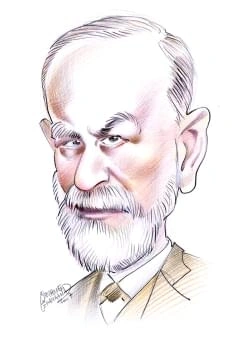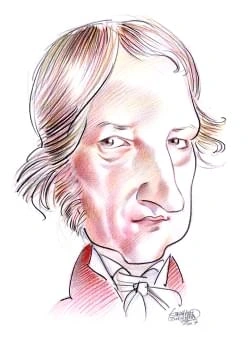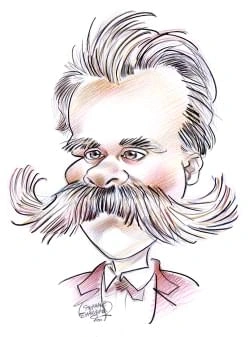175 résultats pour "manufacturing"
-
Somalia - country.
A Agriculture Livestock raising is the principal occupation in Somalia. The size of livestock herds began to recover in the mid-1990s after falling during the country’s civil war. Sheepand goats are the most numerous livestock, with smaller numbers of cattle. The principal crops grown are corn, sorghum, sugarcane, cassava, and bananas. B Forestry and Fishing While most wood is cut for fuel, Somalia’s major forestry export products before the 1990s were frankincense and myrrh. Fish is an import...
-
Sudan - country.
B Principal Cities and Political Divisions The principal city is Khartoum, the capital; other major cities include Omdurman and Khartoum North, major industrial centers, and Port Sudan, a seaport on the RedSea. Sudan is divided into 26 states. C Religion and Language About 70 percent of the people of Sudan are Muslims, some 15 percent are Christians, and most of the remainder follow traditional religions. The people of northernSudan are predominantly Sunni Muslims (Sunni Islam). Most of the pe...
-
Burundi - country.
D Way of Life Most Burundians live in self-contained compounds of small round grass huts scattered over the country’s many hills. The rugo , the traditional Tutsi hut, is divided into sections and surrounded by an enclosure and cattle corrals. Families farm scattered plots of land on different soils at different altitudes to minimize crop failure. Thefloors of valleys are avoided due to higher temperatures and tsetse fly infestation. Social roles are largely determined by ethnicity, with the T...
-
Sewage Disposal.
greater load on the piping system and the treatment plant. The amount of storm-water drainage to be carried away depends on the amount of rainfall as well as on the runoff or yield of the watershed ( see Drainage). A typical metropolitan area discharges a volume of wastewater equal to about 60 to 80 percent of its total daily water requirements, the rest being used for washingcars and watering lawns, and for manufacturing processes such as food canning and bottling. B Composition The composi...
-
Ethiopia - country.
constitute about 6 percent of the population. The Somali, who live in the east and southeast, notably in the Ogadēn region, are about equal in number to the Shangalla.The Denakil inhabit the semidesert plains east of the highlands. The nonindigenous population includes Yemenis, Indians, Armenians, and Greeks. B Political Divisions Ethiopia is divided into nine regions composed of specific ethnic groups. The regions, which have a significant degree of autonomy, are Tigray; Afar; Amhara; Oromia;S...
-
Cyprus - country.
40,000 cubic meters (1.4 million cubic feet) of salt water into fresh water per day, opened at Dhekelia in 1997, and a second larger plant opened at Larnaca in 2001. III PEOPLE OF CYPRUS The combined population of the Greek and Turkish sectors (2008 estimate) is 792,604. The overall population density is 86 persons per sq km (222 per sq mi). About69 percent of the island’s inhabitants live in urban areas. Greek-speaking Cypriots make up approximately 85 percent of the population. About 12 perc...
-
Air Pollution.
Several pollutants attack the ozone layer. Chief among them is the class of chemicals known as chlorofluorocarbons (CFCs), formerly used as refrigerants (notably in airconditioners), as agents in several manufacturing processes, and as propellants in spray cans. CFC molecules are virtually indestructible until they reach thestratosphere. Here, intense ultraviolet radiation breaks the CFC molecules apart, releasing the chlorine atoms they contain. These chlorine atoms begin reacting withozone, br...
-
Fungus - biology.
Many fungi can reproduce by the fragmentation of their hyphae. Each fragment develops into a new individual. Yeast, a small, single-celled fungus, reproduces bybudding, in which a bump forms on the yeast cell, eventually partitioning from the cell and growing into a new yeast cell. V CLASSIFICATION OF FUNGI Scientists have long disagreed about how to classify fungi, and the classification systems are still developing. The first description of fungi was published in 1729 byItalian botanist Pier...
-
-
Chicago (city, Illinois) - geography.
VI EDUCATIONAL AND CULTURAL INSTITUTIONS Chicago has one of the largest public school systems in the United States. The Chicago Board of Education administers the system in a centralized fashion; in recentyears it has been experimenting with local school councils as a means of partial devolution of authority. These councils, established in 1989, have authority in severalareas, including the ability to approve budgets and curriculum. In addition, Chicago has many private schools, including larg...
-
Technology.
loose soil in this region, known as the Fertile Crescent, was easily scratched for planting, and an abundance of trees was available for firewood. By 5000 BC, farming communities were established in areas known today as Syria, Turkey, Lebanon, Israel, Jordan, Greece, and the islands of Crete and Cyprus. Agricultural societies in these places constructed stone buildings, used the sickle to harvest grain, developed a primitive plowstick, and advanced their skills inmetalworking. Trade in flint al...
-
Globalization.
higher living standard for their people. The World Bank made loans to developing countries for dams and other electrical-generating plants, harbor facilities, and otherlarge projects. These projects were intended to lower costs for private businesses and to attract investors. Beginning in 1968 the World Bank focused on low-cost loansfor health, education, and other basic needs of the world’s poor. B International Monetary Fund The IMF makes loans so that countries can maintain the value of thei...
-
Slovakia - country.
The country is divided informally into the three regions of Western Slovakia, Central Slovakia, and Eastern Slovakia, corresponding to administrative divisions that wereabolished in 1989. Most of Slovakia’s 600,000 Hungarians live in the southern parts of Western and Central Slovakia, which served as the cultural center of Hungary forseveral centuries after Hungary proper was invaded by the Ottomans in the 16th century. The Ruthenian and Ukrainian minorities are concentrated in the northernregio...
-
Finland - country.
Productive forestland is the most valuable natural resource of Finland. Spruce, pine, and silver birch are the principal trees used to manufacture wood and pulp andpaper products. Finland lacks coal and petroleum resources and is a net importer of energy resources. However, Finland does have significant deposits of peat, which is cut from thenumerous peat bogs that cover much of the north. Peat is an important heat source for homes, and it provides about 7 percent of Finland’s electricity needs....
-
Haiti - country.
Haitian Creole and French are the official languages of Haiti. Haitian Creole, a French-based Creole with influences from West African languages, was made an officiallanguage under the 1987 constitution. It is the mother tongue for nearly the entire population of Haiti and the language of instruction in schools. French is spokenmainly as a second language by a small section of the population. B Religion About 80 percent of Haiti’s people are nominal Roman Catholics, many of them combining an Af...
-
Ghana - country.
times of depressed cacao prices, Ghana has significantly increased exports of timber to generate needed revenue. In 1988 Ghana initiated a conservation plan called the Forest Resource Management Project. In 1989 Ghana restricted the export of 18 tree species, and in 1994 thecountry banned the export of raw logs. About 4.8 percent (1997) of the country’s land is officially protected, but illegal logging threatens Ghana’s remaining forests. Deforestation, overgrazing, and periodic drought have led...
- lean management
-
-
Michigan - geography.
The interior location of Michigan in the northern part of North America results in a continental climate, characterized by four definite seasons with moist, mild to hotsummers and snowy, cold winters. Winds off of Lakes Michigan and Superior in winter create heavy snow accumulations in nearby areas. The tempering effects of LakeMichigan account for the presence of the state’s famous fruit-growing belt along the lake’s shore. Since the water is colder than the land in spring, the westerly windspa...
-
Michigan - USA History.
The interior location of Michigan in the northern part of North America results in a continental climate, characterized by four definite seasons with moist, mild to hotsummers and snowy, cold winters. Winds off of Lakes Michigan and Superior in winter create heavy snow accumulations in nearby areas. The tempering effects of LakeMichigan account for the presence of the state’s famous fruit-growing belt along the lake’s shore. Since the water is colder than the land in spring, the westerly windspa...
-
Philadelphia (city, Pennsylvania) - geography.
national trend of migration from eastern cities to the warmer climate of the Sun Belt. Whereas in 1950 Philadelphia contained more than 2 million people and ranked as the third largest city in America, the city's population plunged to 1,517,550 by 2000.In 2006, the city's population was estimated at 1,448,394. While the city proper was decreasing in population, the metropolitan area centered on Philadelphia grew. In 2006 the region had 6.2 million inhabitants. Philadelphiaranked as the nation’s...
-
Massachusetts - geography.
mi). Other large artificial lakes include Wachusett Reservoir, East Brimfield Reservoir, and Cobble Mountain Reservoir. Assawompsett Pond, covering about 10 sq km(about 4 sq mi), is the largest natural lake. North Watuppa Pond and Long Pond are other large natural lakes. Lake Chaubunagungamaug, near Webster, is usuallycalled Webster Lake, because the Algonquian name is difficult to pronounce and spell. The full version of the Native American name is said to be the longest place-namein North Amer...
-
Indiana - geography.
Michigan in Michigan. There are about 1,000 small natural lakes in Indiana, chiefly in the northern part of the state. The largest is Lake Wawasee, which covers almost 13 sq km (5 sq mi). Inthe central part of the state there are several lakes that were created behind dams on a number of smaller streams. They include Monroe Lake, near Bloomington; Geistand Eagle Creek reservoirs, northeast and northwest of Indianapolis; and Mississinewa and Huntington reservoirs, north of Marion. C Climate Most...
-
Indiana - USA History.
Michigan in Michigan. There are about 1,000 small natural lakes in Indiana, chiefly in the northern part of the state. The largest is Lake Wawasee, which covers almost 13 sq km (5 sq mi). Inthe central part of the state there are several lakes that were created behind dams on a number of smaller streams. They include Monroe Lake, near Bloomington; Geistand Eagle Creek reservoirs, northeast and northwest of Indianapolis; and Mississinewa and Huntington reservoirs, north of Marion. C Climate Most...
-
New York - geography.
The Adirondack province consists of a large highland area occupying 26,000 sq km (10,000 sq mi) in the northeastern quarter of the state. The region is domelike inshape, with the higher elevations toward the east. The western Adirondack province is more a rugged hill region and not truly mountainous. Geologically, this area isrelated to the Laurentian Upland, or Canadian Shield, which lies north of the St. Lawrence River, for it is composed of the same very old igneous rocks, principallygranite...
-
New York - USA History.
The Adirondack province consists of a large highland area occupying 26,000 sq km (10,000 sq mi) in the northeastern quarter of the state. The region is domelike inshape, with the higher elevations toward the east. The western Adirondack province is more a rugged hill region and not truly mountainous. Geologically, this area isrelated to the Laurentian Upland, or Canadian Shield, which lies north of the St. Lawrence River, for it is composed of the same very old igneous rocks, principallygranite...
-
-
California - geography.
The Basin and Range province is an arid area of mountain ranges, basins, and deserts. In California it is represented primarily by parts of the Great Basin and SonoranDesert sections. Within the Great Basin lies Death Valley, whose lowest elevation, 86 m (282 ft) below sea level, is the lowest point in the Western Hemisphere. TheSonoran Desert section is characterized by numerous flat plains separated by low but rugged ranges. It includes the extensive Mojave, or Mohave, Desert. Also in thisprov...
-
California - USA History.
The Basin and Range province is an arid area of mountain ranges, basins, and deserts. In California it is represented primarily by parts of the Great Basin and SonoranDesert sections. Within the Great Basin lies Death Valley, whose lowest elevation, 86 m (282 ft) below sea level, is the lowest point in the Western Hemisphere. TheSonoran Desert section is characterized by numerous flat plains separated by low but rugged ranges. It includes the extensive Mojave, or Mohave, Desert. Also in thisprov...
-
Kansas - geography.
at the adjoining cities of Kansas City, Kansas, and Kansas City, Missouri. Its chief headstreams are the Republican and Smoky Hill rivers, which join to form the KansasRiver at Junction City. Each of the headstreams has numerous tributaries. The Kansas River proper is only 270 km (170 mi) long, but the Smoky Hill River has a lengthof 870 km (540 mi), and the Republican River has a length of 720 km (450 mi). The main tributary flowing into the Kansas River is the Big Blue River. The Arkansas Rive...
-
Kansas - USA History.
at the adjoining cities of Kansas City, Kansas, and Kansas City, Missouri. Its chief headstreams are the Republican and Smoky Hill rivers, which join to form the KansasRiver at Junction City. Each of the headstreams has numerous tributaries. The Kansas River proper is only 270 km (170 mi) long, but the Smoky Hill River has a lengthof 870 km (540 mi), and the Republican River has a length of 720 km (450 mi). The main tributary flowing into the Kansas River is the Big Blue River. The Arkansas Rive...
-
Ohio - geography.
conflict with modified Gulf air and causing frontal or cyclonic storms. Gulf air is dominant in summer. In fall, polar air passing over Lake Erie is modified, delaying thekilling frost along the adjacent shoreline. C1 Temperatures The mean annual temperatures for the state range from 9° C (48° F) in the northeast to 13° C (55° F) in the south. Average January temperatures range from -4° C(24° F) in the west to 2° C (35° F) in the south. July averages are 24° C (76° F) in the south and 23° C (73...
-
Ohio - USA History.
conflict with modified Gulf air and causing frontal or cyclonic storms. Gulf air is dominant in summer. In fall, polar air passing over Lake Erie is modified, delaying thekilling frost along the adjacent shoreline. C1 Temperatures The mean annual temperatures for the state range from 9° C (48° F) in the northeast to 13° C (55° F) in the south. Average January temperatures range from -4° C(24° F) in the west to 2° C (35° F) in the south. July averages are 24° C (76° F) in the south and 23° C (73...
-
Jacksonville (Florida) - geography.
and southern sections and avoiding the downtown bottleneck where Interstate 95 crosses the Saint Johns River at the Fuller Warren Bridge. In addition to being a regional highway crossroads, the city is a railway hub, with Amtrak passenger service and several freight routes. The city’s expanding airport,located in northern Jacksonville, was the nation’s fastest growing in passenger volume in the mid-1990s. V GOVERNMENT Jacksonville has a mayor-council form of municipal government. The mayor and...
-
San Francisco - geography.
recognized symbol of the city, opened in 1937. It connects San Francisco to Marin County to the north, one of the wealthiest suburban areas in the nation. With the construction of the Bay and Golden Gate bridges and other links from the city to its suburbs, the San Francisco Bay area has become one large metropolitanregion. San Francisco itself is only 122 sq km (47 sq mi) of land area, but the city’s Primary Metropolitan Statistical Area (defined by the Census Bureau as SanFrancisco, San Mateo,...
-
-
Utah - geography.
Temperatures decrease from the south to the north in the state. In the mountains the average temperature drops about 0.5°C (about 1°F) for every about 300 m(about 1,000 ft) rise in elevation. Average July temperatures range from less than 16°C (60°F) in the mountains to more than 27°C (80°F) in a few locations insouthern Utah. At Salt Lake City average July temperatures range from a low of 18°C (64°F) to a high of 33°C (92°F). There is a great variation between daytime andnighttime temperatures,...
-
Utah - USA History.
Temperatures decrease from the south to the north in the state. In the mountains the average temperature drops about 0.5°C (about 1°F) for every about 300 m(about 1,000 ft) rise in elevation. Average July temperatures range from less than 16°C (60°F) in the mountains to more than 27°C (80°F) in a few locations insouthern Utah. At Salt Lake City average July temperatures range from a low of 18°C (64°F) to a high of 33°C (92°F). There is a great variation between daytime andnighttime temperatures,...
-
Missouri - geography.
Saint Francois Mountains, at the eastern end of the crest of the dome. Only in these mountains have the sedimentary rocks been sufficiently eroded away so that theunderlying igneous rocks are exposed. They form the rounded, knoblike peaks of an old mountain range. The peaks project, in isolation or in clusters, between 230 and300 m (750 and 1,000 ft) above the surrounding sedimentary basins. One of these knobs, Taum Sauk Mountain, reaches 540 m (1,772 ft) above sea level and is thehighest point...
-
Missouri - USA History.
Saint Francois Mountains, at the eastern end of the crest of the dome. Only in these mountains have the sedimentary rocks been sufficiently eroded away so that theunderlying igneous rocks are exposed. They form the rounded, knoblike peaks of an old mountain range. The peaks project, in isolation or in clusters, between 230 and300 m (750 and 1,000 ft) above the surrounding sedimentary basins. One of these knobs, Taum Sauk Mountain, reaches 540 m (1,772 ft) above sea level and is thehighest point...
-
Jakarta - geography.
voluntary movement of families to Indonesia's less populated islands). Jakarta is a magnet for migrants from other areas of Indonesia; during the late 1980s an estimated 250 migrants arrived daily. Most were between the ages of 15 and39 years, many with six years of education or less. There is also a significant number of commuters and seasonal migrants who work in government, manufacturing,and services. In addition, many of these temporary residents are engaged in informal employment as drivers...
-
Rhode Island - geography.
C (73° F). Along the northern state line, the January mean temperature is about 1° C (about 2° F) colder than in Warwick in January. Along the ocean coast, theJanuary mean temperature is -1° C (30° F). Warm season temperatures are also influenced by the ocean and bay, so temperatures are usually cooler along the coastthan in the interior. The difference tends to be greatest in spring and early summer. Winter temperatures in Rhode Island are usually above -7° C (20° F), buttemperatures colder by...
-
Rhode Island - USA History.
C (73° F). Along the northern state line, the January mean temperature is about 1° C (about 2° F) colder than in Warwick in January. Along the ocean coast, theJanuary mean temperature is -1° C (30° F). Warm season temperatures are also influenced by the ocean and bay, so temperatures are usually cooler along the coastthan in the interior. The difference tends to be greatest in spring and early summer. Winter temperatures in Rhode Island are usually above -7° C (20° F), buttemperatures colder by...
-
Central African Republic - country.
Manufacturing activity in the Central African Republic is very limited. Products include cottonseed, peanut, and sesame oils; textiles; leather goods; tobacco products;soap; flour; bricks; and paint. The output of electricity in 2003 was 106 million kilowatt-hours, 80.19 percent of which was generated in hydroelectric installations. Gemdiamonds account for nearly all the country’s mineral output and two-thirds of its export revenue. Production was 250,000 carats in 2004. Uranium was discovered i...
-
-
Pennsylvania - geography.
B Rivers and Lakes There are three major river basins in Pennsylvania: the Susquehanna, the Ohio, and the Delaware. Together they drain more than 90 percent of Pennsylvania’s landarea. Most of eastern and central Pennsylvania is drained by the Susquehanna and Delaware systems. The western part of the state is drained by the Allegheny andMonongahela rivers, which join at Pittsburgh to form the Ohio. In addition to the three major river basins, short streams flowing into Lake Erie drain the north...
-
Pennsylvania - USA History.
B Rivers and Lakes There are three major river basins in Pennsylvania: the Susquehanna, the Ohio, and the Delaware. Together they drain more than 90 percent of Pennsylvania’s landarea. Most of eastern and central Pennsylvania is drained by the Susquehanna and Delaware systems. The western part of the state is drained by the Allegheny andMonongahela rivers, which join at Pittsburgh to form the Ohio. In addition to the three major river basins, short streams flowing into Lake Erie drain the north...
-
North Carolina - geography.
The drainage divide in North Carolina follows the Blue Ridge range on the eastern margin of the mountain region. This is called the “Eastern Continental Divide.” West ofthis divide, rivers drain into the Mississippi River through the Tennessee River and other tributaries of the Ohio River. The French Broad, the largest, and the LittleTennessee flow into the Tennessee River. The New River flows into the Kanawha River of West Virginia which in turn flows into the Ohio River. Most of the state’s ri...
-
North Carolina - USA History.
The drainage divide in North Carolina follows the Blue Ridge range on the eastern margin of the mountain region. This is called the “Eastern Continental Divide.” West ofthis divide, rivers drain into the Mississippi River through the Tennessee River and other tributaries of the Ohio River. The French Broad, the largest, and the LittleTennessee flow into the Tennessee River. The New River flows into the Kanawha River of West Virginia which in turn flows into the Ohio River. Most of the state’s ri...
-
Asia - Geography.
Borneo, the world’s third largest island after Greenland and New Guinea. To the southeast is the Timor Sea separating the Asian island of Timor from the Australiancontinent. The Indian subcontinent is flanked by the Bay of Bengal on the east and the Arabian Sea on the west. The island of Sri Lanka and the much smaller Maldives andNicobar Islands trail away to the south. The Arabian Sea’s Gulf of Aden, the Red Sea, the Mediterranean Sea, and the Black Sea form an arc along the western rim of Asia...
-
Asia - History.
Borneo, the world’s third largest island after Greenland and New Guinea. To the southeast is the Timor Sea separating the Asian island of Timor from the Australiancontinent. The Indian subcontinent is flanked by the Bay of Bengal on the east and the Arabian Sea on the west. The island of Sri Lanka and the much smaller Maldives andNicobar Islands trail away to the south. The Arabian Sea’s Gulf of Aden, the Red Sea, the Mediterranean Sea, and the Black Sea form an arc along the western rim of Asia...
-
Alabama (state) - geography.
indentations along the coast are measured, the state’s shoreline is 977 km (607 mi) long. It includes the shores of Mobile Bay, an inlet 56 km (35 mi) long at the mouthof the Mobile River. Barrier beaches partly block the entrance to the bay, leaving narrow openings on either side of Dauphin Island. Dauphin and other islands alongAlabama’s coast west of Mobile Bay are separated from the mainland by Mississippi Sound. D Climate Alabama has a humid subtropical climate, with short, relatively mild...
-
Alabama (state) - USA History.
indentations along the coast are measured, the state’s shoreline is 977 km (607 mi) long. It includes the shores of Mobile Bay, an inlet 56 km (35 mi) long at the mouthof the Mobile River. Barrier beaches partly block the entrance to the bay, leaving narrow openings on either side of Dauphin Island. Dauphin and other islands alongAlabama’s coast west of Mobile Bay are separated from the mainland by Mississippi Sound. D Climate Alabama has a humid subtropical climate, with short, relatively mild...
-
-
Political Parties in the United States.
quickly enabled the Republican Party to overpower the Know-Nothings. Although the Republicans lost their first campaign for the presidency in 1856, they triumphed in1860 with former congressman Abraham Lincoln. The Republican victory resulted in part from the division of the Democratic Party into Northern and Southern factions,each of which ran its own presidential candidate, and in part from their success at attracting Whigs and Know-Nothings who had opposed the Republicans in 1856.During the C...
-
Australia - country.
itself forms most of the border between New South Wales and Victoria. Considerable lengths of the Murray, Darling, and Murrumbidgee rivers are navigable during thewet seasons. The central plains region, also known as the Channel Country, is interlaced by a network of rivers. During the rainy season these rivers flood the low-lying countryside,but in dry months they become merely a series of water holes. The Victoria, Daly, and Roper rivers drain a section of the Northern Territory. In Queensland...
}})








